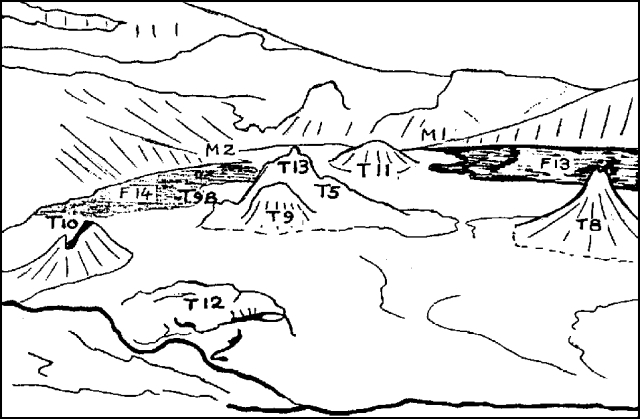Report on Ol Doinyo Lengai (Tanzania) — September 1989
Scientific Event Alert Network Bulletin, vol. 14, no. 9 (September 1989)
Managing Editor: Lindsay McClelland.
Ol Doinyo Lengai (Tanzania) Lava in several vents but no fresh flows seen
Please cite this report as:
Global Volcanism Program, 1989. Report on Ol Doinyo Lengai (Tanzania) (McClelland, L., ed.). Scientific Event Alert Network Bulletin, 14:9. Smithsonian Institution. https://doi.org/10.5479/si.GVP.SEAN198909-222120
Ol Doinyo Lengai
Tanzania
2.764°S, 35.914°E; summit elev. 2962 m
All times are local (unless otherwise noted)
When Alan Fowler climbed the volcano 26 July, he saw no fresh flows but heard lava bubbling in several vents. Both the N and S crater floors were pale, indicating that no flows were younger than several weeks old. A medium-gray blocky flow that covered the SW quadrant of the N crater floor (F13, figure 13) had probably been erupted before the 28 June overflight. Another medium-gray flow (F14) could be seen at the base of the SE wall. There were no changes to the extent of lava that had flowed over the saddle into the S crater in December 1988, or to vents T8, T10, or T11 since November. A feature N of T10 near the E wall (T12) may have been the site of bubbling lava in late May. A higher pinnacle (T13) had developed on the W side of T5/T9. T11 was inactive, and the inner cone . . . was too small to be seen. A dark area to the NW probably marked a line of fumaroles that were clearly visible in June 1988, but covered by lava in late November.
 |
Figure 13. View of Ol Doinyo Lengai's crater from the E rim, 26 July 1989. Traced from a slide taken by Alan Fowler; courtesy of C. Nyamweru. |
On a 23 August overflight, Lester Eshelman photographed the crater from the NE. No new flows were visible, but F13 and F14 appeared darker than the surrounding crater. The T13 pinnacle looked dark, but may have been covered by shadows rather than fresh lava. The overflow across the saddle between M1 and M2 had not grown since the June-July 1989 observations.
Further Reference. Nyamweru C., 1989, Report on activity in the northern crater of Ol Doinyo Lengai, July 1988 to August 1989: Journal of the East African Natural History Society and National Museum, v. 79, no. 194, 15 p.
Geological Summary. The symmetrical Ol Doinyo Lengai is the only volcano known to have erupted carbonatite tephras and lavas in historical time. The prominent stratovolcano, known to the Maasai as "The Mountain of God," rises abruptly above the broad plain south of Lake Natron in the Gregory Rift Valley. The cone-building stage ended about 15,000 years ago and was followed by periodic ejection of natrocarbonatitic and nephelinite tephra during the Holocene. Historical eruptions have consisted of smaller tephra ejections and emission of numerous natrocarbonatitic lava flows on the floor of the summit crater and occasionally down the upper flanks. The depth and morphology of the northern crater have changed dramatically during the course of historical eruptions, ranging from steep crater walls about 200 m deep in the mid-20th century to shallow platforms mostly filling the crater. Long-term lava effusion in the summit crater beginning in 1983 had by the turn of the century mostly filled the northern crater; by late 1998 lava had begun overflowing the crater rim.
Information Contacts: C. Nyamweru, Kenyatta Univ.

